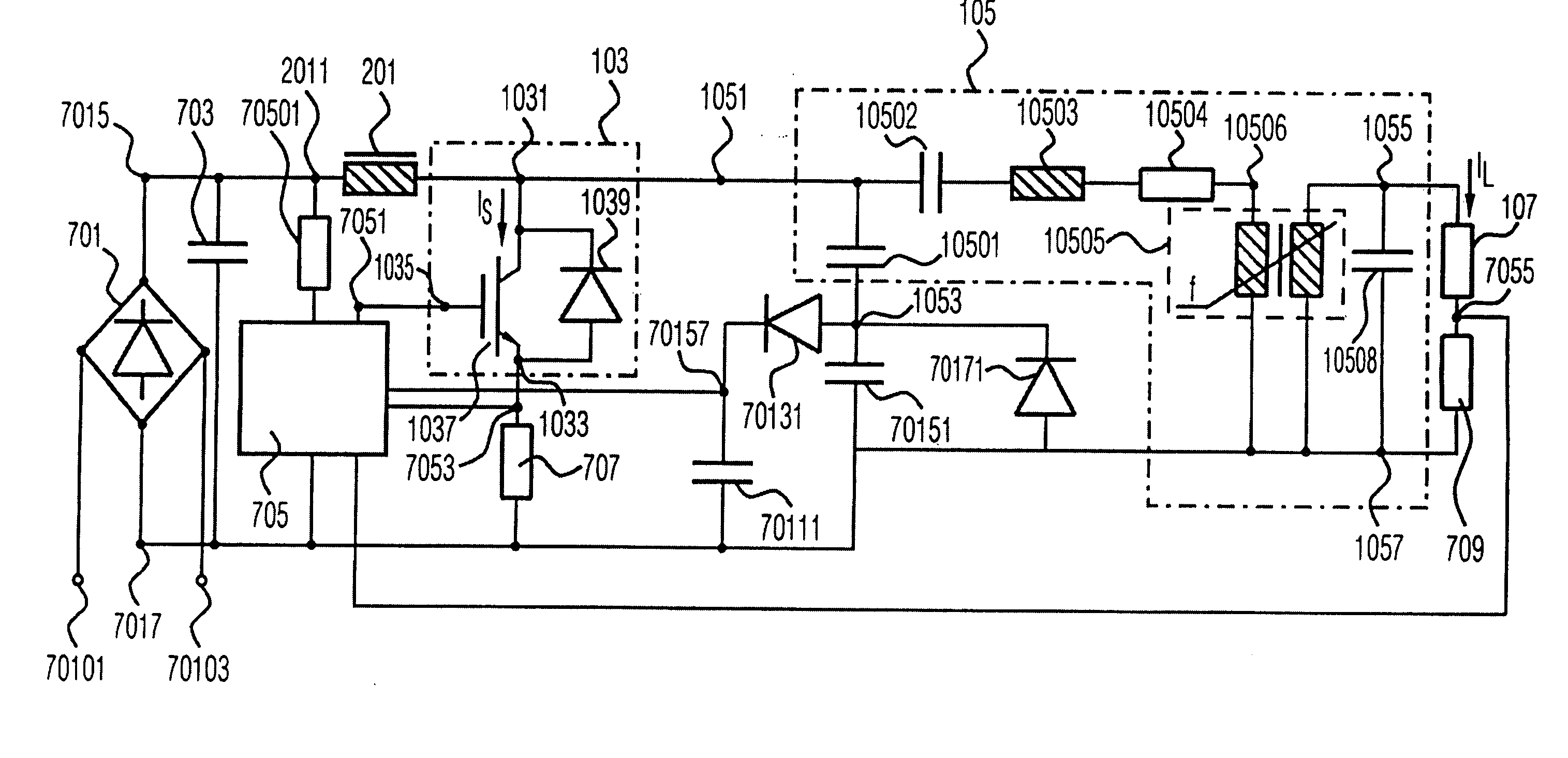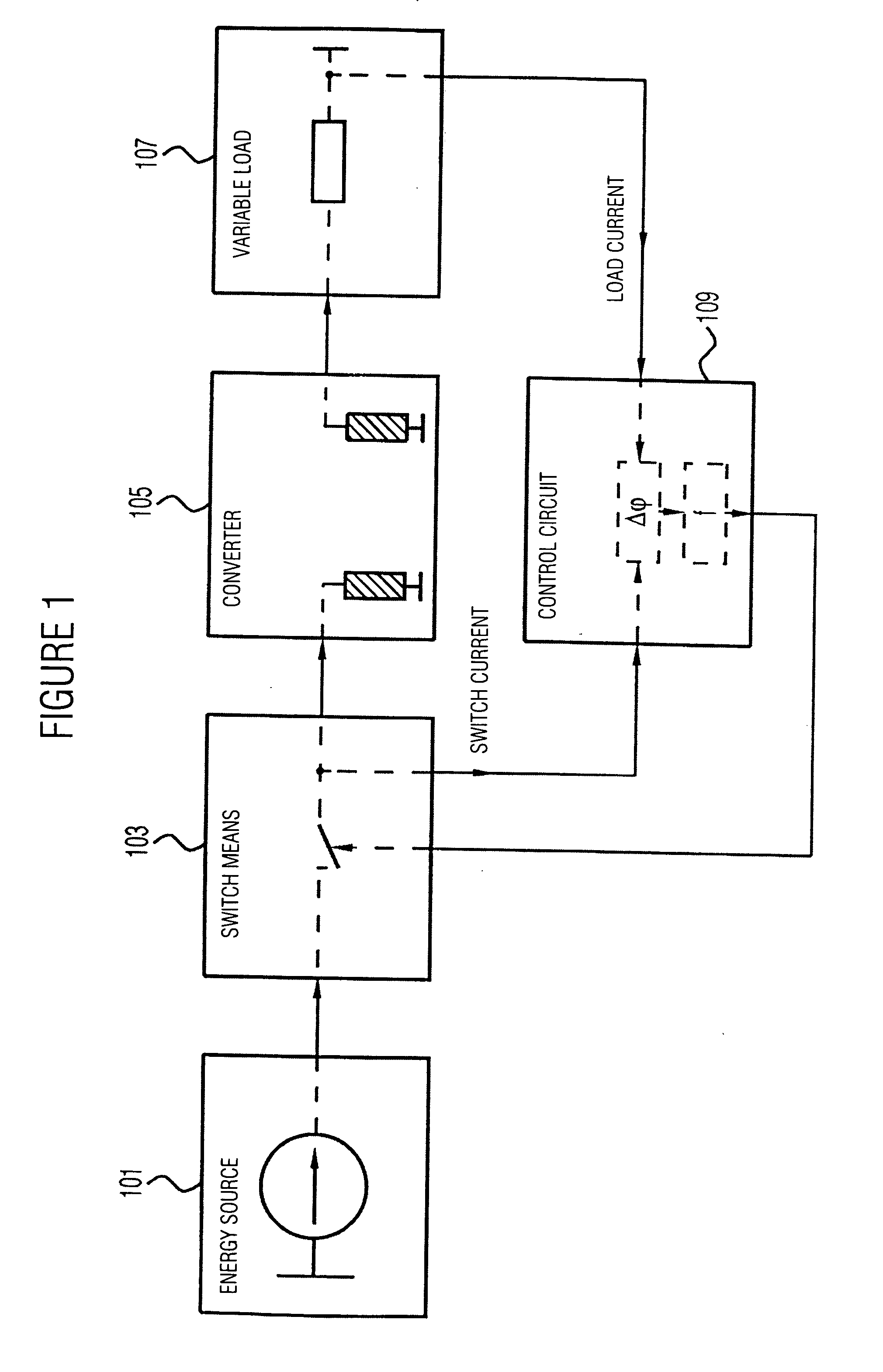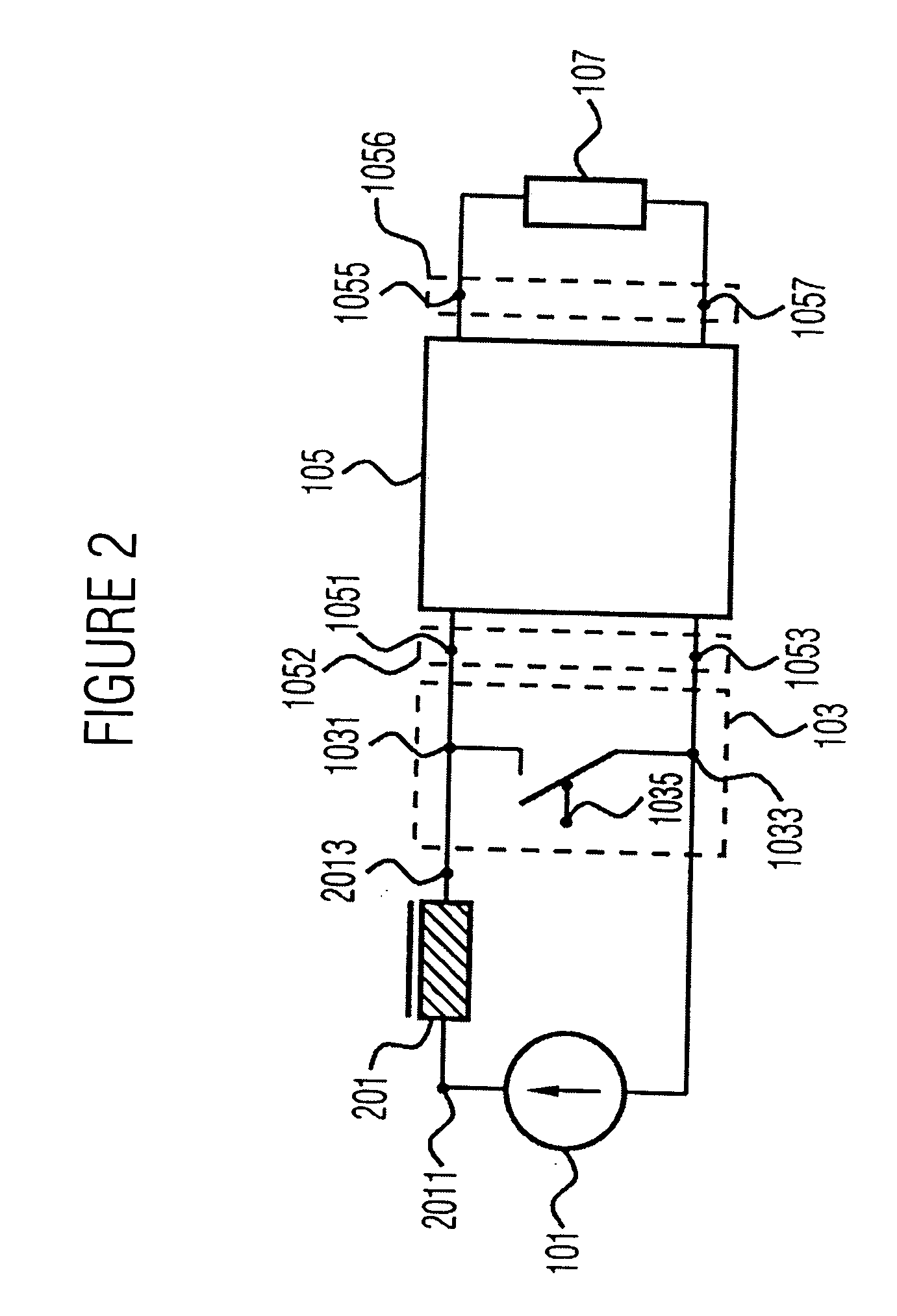Resonance converter with voltage regulation and method of driving variable loads
a voltage regulation and variable load technology, applied in the direction of electric variable regulation, process and machine control, instruments, etc., can solve the disadvantage of capacitive sweep-out losses, the effect of efficient driving variable loads
- Summary
- Abstract
- Description
- Claims
- Application Information
AI Technical Summary
Benefits of technology
Problems solved by technology
Method used
Image
Examples
Embodiment Construction
[0043] In FIG. 1 a rough illustration of an inventive resonance converter is shown, which includes a source 101, a switch 103, a piezo-transformer 105, a variable load 107, as well as control means 109. A voltage provided by the source 101 or a current provided thereby is switched by means of the switch 103 at a switching frequency, whereby an input signal is present at the piezo-transformer 105, which is converted to an output signal having a frequency dependent on the switching frequency of the switch 103. This output signal serves for driving a load 107, the load characteristic of which is variable. The switching frequency with which the switch 103 is switched is controlled by the control means 109 on the basis of a phase shift between the current through the switch 103 and the load current through the load 107. This phase shift may be determined from several signals, which may for example be tapped before and after the piezo-transformer 105 as well as before or after the switch ...
PUM
 Login to View More
Login to View More Abstract
Description
Claims
Application Information
 Login to View More
Login to View More - R&D
- Intellectual Property
- Life Sciences
- Materials
- Tech Scout
- Unparalleled Data Quality
- Higher Quality Content
- 60% Fewer Hallucinations
Browse by: Latest US Patents, China's latest patents, Technical Efficacy Thesaurus, Application Domain, Technology Topic, Popular Technical Reports.
© 2025 PatSnap. All rights reserved.Legal|Privacy policy|Modern Slavery Act Transparency Statement|Sitemap|About US| Contact US: help@patsnap.com



